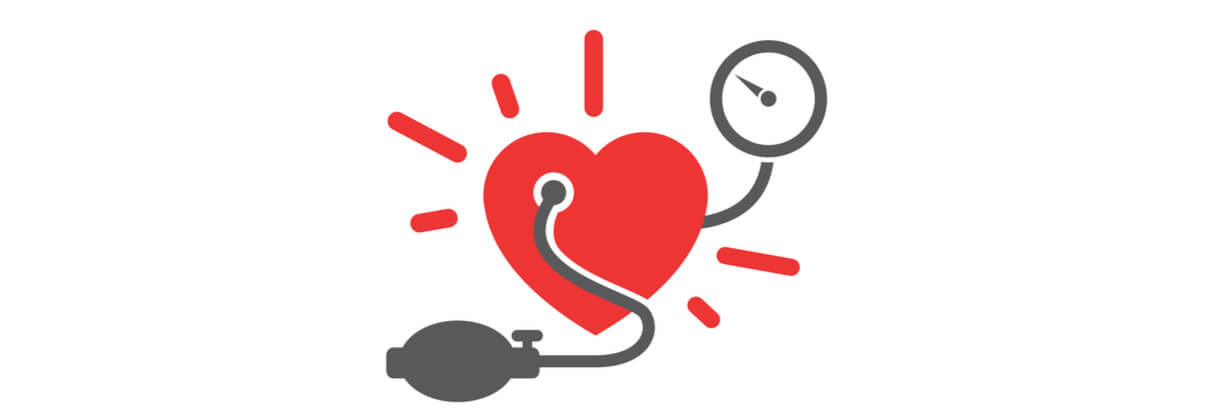At risk for high blood pressure?

You just came home from your annual physical and your doctor told you that you are at risk of stage one hypertension. You look in the mirror as you normally do, and confused, don't see an obese reflection looking back at you. Your doctor explained to you that two or more carefully recorded readings obtained on two or more occasions will give you that diagnosis. Your doctor was vague in telling you that your nutrition can help reduce your blood pressure and so you are unsure of what to do next. In this post I will give you a starting point on how to lower your blood pressure and reduce your risk of heart disease.
You have already taken charge and exercise regularly; however, this article focuses on nutritional practices for hypertension risk reduction. There are several ways in accomplishing this task, but I have two words for you, "DASH Diet." OK I was misleading you here a little; it's actually six words, Dietary Approaches to Stop Hypertension (DASH) Diet. This diet is rich in whole grains, fruits, vegetables and low-fat dairy products. The diet has less saturated fat and cholesterol and can lower your blood pressure by up to 14 mmHg if you already have high blood pressure. You are thinking, "Where do I sign up?" Here is the best part, you don't sign up anywhere, it's as simple as starting today. In no way is it easy to change your eating habits but you are in luck. Here are some tips on how to start. Keep a food diary. Writing down what you eat for even just a week will shed light on your true eating habits, this way you can't even lie to yourself. Monitor what you eat, how much, when and also why. Occasional stress can contribute to high blood pressure if you react to stress by eating unhealthy food. Consider boosting your potassium intake. Potassium can lessen the effects of sodium on blood pressure. Opt for fruits and vegetables because they are the best sources of potassium in food, avoid supplements. It's no secret that doctors are not well versed with nutrition but talk to your doctor about the potassium level that's best for you. Be a smart and proactive shopper. Read food labels when you shop and compare brands and foods, in no time you will become a healthy shopping machine. Stick to your healthy eating plan as much as possible when eating out.
There are several recommended daily allowance (RDA) numbers that you should know, one of them being the RDA for sodium. The RDA for sodium is 2,300 mg per day, which is equal to about one teaspoon of table salt. It is however important to note that the effects of sodium intake on blood pressure varies among groups of people. Evan a small reduction in the sodium of your diet can potentially improve your heart health and reduce blood pressure by about 2-8 mmHg. Read, read, read! Read your food labels and if possible choose the low sodium alternative to the foods and beverages that you normally buy. Most, if not all, canned food, such as beans for example will have a low sodium option. This being said, only a small amount of sodium occurs naturally in food. Most of the sodium is added during processing to prolong shelf life, when possible eat fewer processed foods. There is no need to drastically reduce the sodium in your diet, you would never enter the gym and go straight to your one rep max and dead-lift, cut back gradually. Over time your palate will adjust. For all my loyal readers, I will give you a personal secret. Don't add salt but instead use herbs or spices to add flavor to your food. Thank me later!
Let's talk adult beverages. You may or may not know that alcohol can be both good and bad for your health. I am in no ways talking about your weekend binge, but instead by drinking alcohol in moderation. What does that mean? Generally, that is one drink per day for women and two drinks per day for men. Again, to clarify, in case the first time I mentioned it didn't fully sink in, this does not mean drinking your weekly alcohol allowance during a frat party on Saturday night and not drinking the rest of the week. The protective effect is lost if you drink too much alcohol and may even give rise to other chronic diseases such as dementia and ischemic stroke. With moderation the potential for lowering your blood pressure may be about 2 to 4 mmHg. I want you to be on the same page, one drink is considered 1.5 ounces of 80-proof liquor, five ounces of wine, and 12 ounces of beer. The other adult beverage is coffee and caffeinated drinks. The effects of caffeine on blood pressure are still debated. For people who rarely consume caffeinated beverages, blood pressure can potentially raise 10 mmHg, but for regular coffee drinkers caffeine may have minimal or no effect on their blood pressure. It would be a good idea to check if caffeine raises your blood pressure. Take my advice and check your blood pressure within 30 minutes of drinking your favorite caffeinated beverage. If you notice your pressure increased by about 5 to 10 mmHg, then it would be safe to assume that you are sensitive to the blood pressure raising effects of caffeine. During your next office visit with your doctor mention the discovered caffeine effects on your blood pressure.
Keeping in mind all the junk that is out there that we consider food, and with your knew knowledge now, you have been given an excellent positional point to start your journey on reducing your hypertension risk, and more importantly, a healthier you.
Happy eating,
Majid Hodzic
